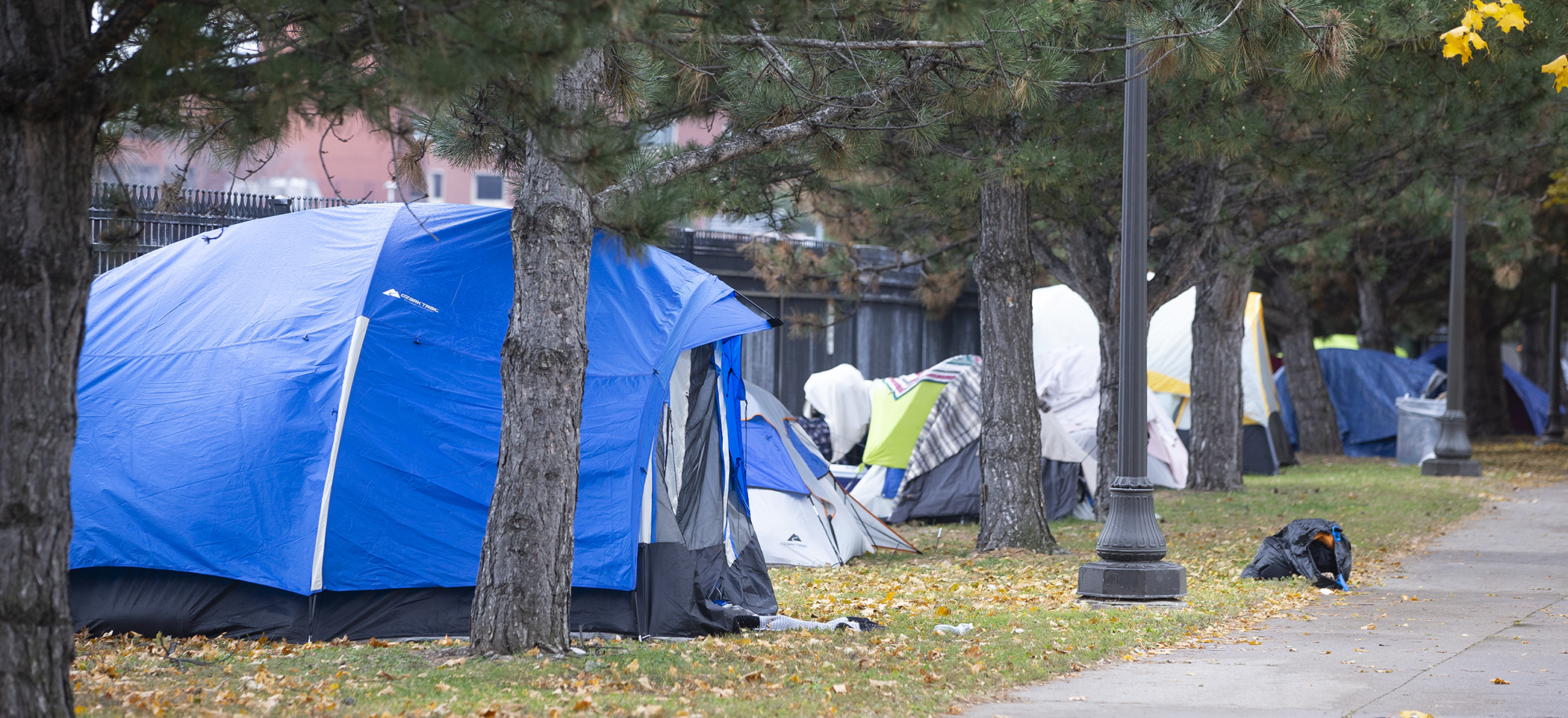Protection of private property among concerns in bill regarding homeless encampment policies

Rep. Aisha Gomez (DFL-Mpls) has spent time at homeless encampments in her district. She’s seen the impact of sudden changes when people in the encampments are forced to move suddenly.
Gomez wants to add protections for homeless people in such situations.
She sponsors HF4225 that would require local governments to create policies regarding homeless encampments, including provisions regarding public posting notices and storage of personal property when an encampment is removed.
The bill was laid over by the House Preventing Homelessness Division Wednesday until next week after the division ran out of time for member questions. It has no Senate companion.
“Often when you displace somebody who is in unsheltered homelessness, who’s living in a tent, they bring – they don’t like you to call them bulldozers. I guess they’re Bobcats – but they’ll bring little machines to scoop people’s stuff up and throw it away,” Gomez said.
Local governments would be required, per the bill, to develop policies “to ensure the most humane treatment for removal of homeless individuals from camping sites on public property.”
Among the provisions:
- local governments would have to post public notice 72 hours before removing an encampment, except in emergency cases determined by the mayor of a city or administrative head of a county;
- notices would need to be written in English, Spanish or other language spoken by a number of the residents in the encampment and be posted at all entrances to the site;
- notice would be required to be given to agencies providing services to homeless people; and
- local governments would be required to store personal property for at least 30 days and include in notices where property can be claimed. Items of no value or in unsanitary conditions would be discarded immediately, while weapons, controlled substances and stolen items would be given to local law enforcement.
“We have to put some thought and put some parameters in place to make decisions about how to deal with unsheltered homelessness, and really to have policies that treat people humanely even when they’re in really difficult spots in their lives,” Gomez said.
The bill would also allow the Department of Transportation to work with cities or counties with a population of at least 50,000 to remove encampments on MnDOT property. A 48-hour notice would be required before removal of the encampment, which must also comply with the local policies regarding encampments.
Gomez agreed to have the bill laid over for more discussion after a request from Rep. Anne Neu Brindley (R-North Branch). One concern for Neu Brindley revolved around the space local agencies have to store the personal items.
“This is going to create a pretty significant burden, particularly on small cities and municipalities throughout the state who, No. 1, don’t have the same problem that we are dealing with in the same way in our urban core, but also don’t have the same resources and infrastructure available to deal with it in this way.”
Related Articles
Search Session Daily
Advanced Search OptionsPriority Dailies
Speaker Emerita Melissa Hortman, husband killed in attack
By HPIS Staff House Speaker Emerita Melissa Hortman (DFL-Brooklyn Park) and her husband, Mark, were fatally shot in their home early Saturday morning.
Gov. Tim Walz announced the news dur...
House Speaker Emerita Melissa Hortman (DFL-Brooklyn Park) and her husband, Mark, were fatally shot in their home early Saturday morning.
Gov. Tim Walz announced the news dur...
Lawmakers deliver budget bills to governor's desk in one-day special session
By Mike Cook About that talk of needing all 21 hours left in a legislative day to complete a special session?
House members were more than up to the challenge Monday. Beginning at 10 a.m...
About that talk of needing all 21 hours left in a legislative day to complete a special session?
House members were more than up to the challenge Monday. Beginning at 10 a.m...